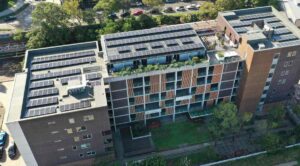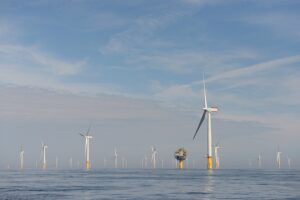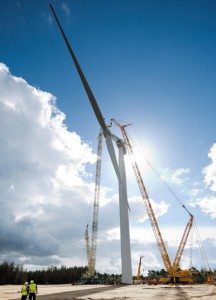A new report has concluded that Australia – and particularly its traditional coal hubs – could become a significant economic power in a decarbonised world and could lead the world in producing the components of low-carbon industrialisation.
The new report, published by the Institute for Energy Economics and Financial Analysis (IEEFA), presents a case study describing how the Queensland region of Gladstone, could become a world-leading producer of components for the low-carbon industrialisation – components such as aluminium, steel, cement, silicon, lithium, and rare earth minerals.
The focus on the report looks at Australia’s potential to value add with industrial processes before exports, and looks in particular at the potential of aluminium smelters to benefit from being powered by renewables rather than their traditional source of coal fired power.
Authored by Clark Butler, an IEFFA guest contributor and corporate advisor, the report highlights that instead of closing the country’s “loss-making and high emitting aluminium smelters,” these industries could instead transition to renewable electricity supply, “invest in plant upgrades to support demand response management, and profit from the long-term growth of the metals and industrial processing markets.”
In the words of Butler, “Aluminium smelters could become giant virtual batteries.”
Already some smelters generate what Butler describes as “considerable revenue” by supplying energy or energy services – such as Rio Tinto’s Kitimat in Canada and Hydro in Norway, which “view integration of electricity and smelting as critical to manage both aluminium and electricity price volatility.”
These smelters are able to ramp up aluminium production when aluminium prices are attractive or curtail production and sell the surplus electricity when that provides a better financial return. According to Butler, “it is worth re-imagining a smelter as a giant virtual battery, one that also produces aluminium.”
The report also quotes Tomago Aluminium CEO Matt Howell, who acknowledged that this re-imagining is an important part of his thinking in supporting the continuation of the Australian Energy Market Operator’s (AEMO) Reliability and Emergency Reserve Trader scheme.
“We’ve got a very large load that can come off in a very short space of time to avoid large-scale rolling blackouts, and that has value,” he said, referring to 600MW of capacity which can be switched off within minutes,” Howell said.
In fact, according to the report, most smelters can provide a very periodic reserve system of demand response, specifically the ability to occasionally reduce electricity demand for up to 3 hours at a time.
However, without technology upgrades, this capacity presents a significant risk to the integrity of smelter potlines. For example, an unplanned 5.5-hour outage at Portland in Victoria in 2016 reduced smelting capacity down to 27% for many months.
As such, investing in upgrades that yield greater technology and operational controls would allow more flexibility while at the same time reducing the risks to smelter investment.
However, while there are multiple options for technological optimisation and growth, there is currently little to no reason for businesses in Australia to make such a transition, especially considering the significant up-front investment required for any upgrades.
Further, Australia’s government provides no incentive for companies to make such changes, exacerbated by the fact it removed the price on carbon pollution when it cancelled the emissions trading scheme back in 2014.
Nevertheless, the report identifies that it remains in the interest of AEMO and Boyne Smelters Limited (BSL) – Queensland’s largest electricity user, located in Gladstone– to maintain reliable electricity supply and support grid stability.
Additionally, it is in Australia’s national interest to put the economy on what Butler describes as “a progressive path to decarbonisation, with all the benefits of energy system price deflation this could bring.”
Government support for technological optimisation and upgrades of aluminium smelters, and the larger Australian industry sector, could not only help put the country on a road to decarbonisation, but as the report highlights, also provide regional benefits.
BSL, located on Boyne Island just south of the port of Gladstone, serves as a key example for the opportunities available and the resulting regional economic development on offer.
The report, therefore, outlines a plan for the development of the Gladstone region through a regional energy usage and supply plan which Butler claims “would improve energy security and be a key enabler of Queensland’s growth.”
Commenting on the report’s regional findings, Miles George, former CleanCo chief executive and current Australian Conservation Foundation board member concurred, saying that “Gladstone is very well placed to build a bright renewable-powered future on its heavy industry foundations.
“Given the age and unreliability of many of Queensland’s coal-fired power stations – and with the global market rapidly shifting towards green steel, aluminium, hydrogen and other products – investing in low cost, reliable, renewable power makes sense to secure a strong future for Gladstone’s heavy industry, particularly the Boyne aluminium smelter.”
“Instead of closing Australia’s loss-making, high pollution aluminium smelters, these smelters can be rapidly transformed to run on renewable electricity,” George said.
“The transition to low cost renewable energy provides a valuable opportunity to modernise and reposition Australia’s aluminium smelting sector.
“Green aluminium – aluminium produced using renewable electricity – has a good long-term outlook and will be priced separately by the London Metals Exchange from next year.
“There are excellent solar and wind resources around Gladstone, sufficient to provide renewable generation to meet the needs of the region’s heavy industry. The Palaszczuk government recently announced it will invest $145 million to establish three renewable energy zones in the state, including one in the Gladstone region.
“Large-scale renewable energy supply, smelter-provided demand-side response and renewable hydrogen production could create a world class energy and industry precinct that will keep thousands of jobs in the region and generate growth for many years to come.”










